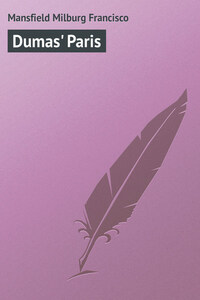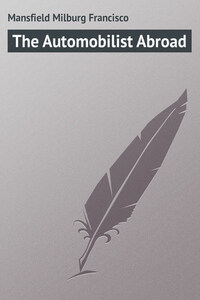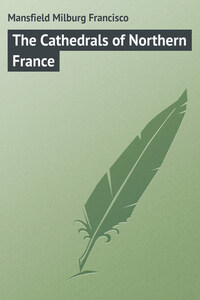INTRODUCTION
TOO often – it is a half-acknowledged delusion, however – one meets with what appears to be a theory: that a book of travel must necessarily be a series of dull, discursive, and entirely uncorroborated opinions of one who may not be even an intelligent observer. This is mere intellectual pretence. Even a humble author – so long as he be an honest one – may well be allowed to claim with Mr. Howells the right to be serious, or the reverse, "with his material as he finds it;" and that "something personally experienced can only be realized on the spot where it was lived." This, says he, is "the prime use of travel, and the attempt to create the reader a partner in the enterprise" … must be the excuse, then, for putting one's observations on paper.
He rightly says, too, that nothing of perilous adventure is to-day any more like to happen "in Florence than in Fitchburg."
A "literary tour," a "cathedral tour," or an "architectural tour," requires a formula wherein the author must be wary of making questionable estimates; but he may, with regard to generalities, – or details, for that matter, – state his opinion plainly; but he should state also his reasons. With respect to church architecture no average reader, any more than the average observer, willingly enters the arena of intellectual combat, but rather is satisfied – as he should be, unless he is a Freeman, a Gonse, or a Corroyer – with an ampler radius which shall command even a juster, though no less truthful, view.
Not from one book or from ten, in one year or a score can this be had. The field is vast and the immensity of it all only dawns upon one the deeper he gets into his subject. A dictionary of architecture, a compendium or gazetteer of geography, or even the unwieldy mass of fact tightly held in the fastnesses of the Encyclopædia Britannica will not tell one – in either a long or a short while – all the facts concerning the cathedrals of France.
Some will consider that in this book are made many apparently trifling assertions; but it is claimed that they are pertinent and again are expressive of an emotion which mayhap always arises of the same mood.
Notre Dame at Rodez is a "warm, mouse-coloured cathedral;" St. Cécile d'Albi is at once "a fortress and a church," and the once royal city of Aigues-Mortes is to-day but "a shelter for a few hundred pallid, shaking mortals."
Such expressions are figurative, but, so far as words can put it, they are the concentrated result of observation.
These observations do not aspire to be considered "improving," though it is asserted that they are informative.
Description of all kinds is an art which requires considerable forethought in order to be even readable. And of all subjects, art and architecture are perhaps the most difficult to treat in a manner which shall not arouse an intolerant criticism.
Perhaps some credit will be attained for the attempts herein made to present in a pleasing manner many of the charms of the ecclesiastical architecture of southern France, where a more elaborate and erudite work would fail of its object. As Lady Montagu has said in her "Letters," – "We travellers are in very hard circumstances. If we say nothing new, we are dull, and have observed nothing. If we tell any new thing, we are laughed at as fabulous and romantic."
This book is intended as a contribution to travel literature – or, if the reader like, to that special class of book which appeals largely to the traveller.
Most lovers of art and literature are lovers of churches; indeed, the world is yearly containing more and more of this class. The art expression of a people, of France in particular, has most often first found its outlet in church-building and decoration. Some other countries have degenerated sadly from the idea.
In recent times the Anglo-Saxon has mostly built his churches, – on what he is pleased to think are "improved lines," – that, more than anything else, resemble, in their interiors, playhouses, and in their exteriors, cotton factories and breweries.
This seemingly bitter view is advanced simply because the writer believes that it is the church-members, using the term in its broad sense, who are responsible for the many outrageously unseemly church-buildings which are yearly being erected; not the architects – who have failings enough of their own to answer for.
It is said that a certain great architect of recent times was responsible for more bad architecture than any man who had lived before or since. Not because he produced such himself, but because his feeble imitators, without his knowledge, his training, or his ambition, not only sought to follow in his footsteps, but remained a long way in the rear, and stumbled by the way.
This man built churches. He built one, Trinity Church, in Boston, U. S. A., which will remain, as long as its stones endure, an entirely successful transplantation of an exotic from another land. In London a new Roman Catholic cathedral has recently been erected after the Byzantine manner, and so unexpectedly successful was it in plan and execution that its author was "medalled" by the Royal Academy; whatever that dubious honour may be worth.











